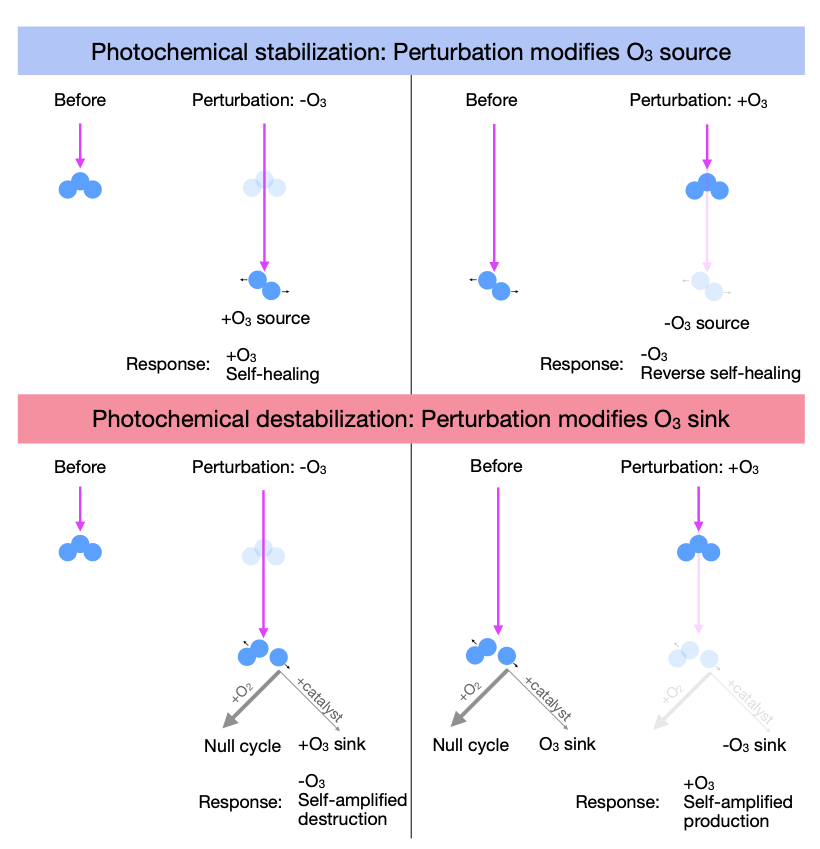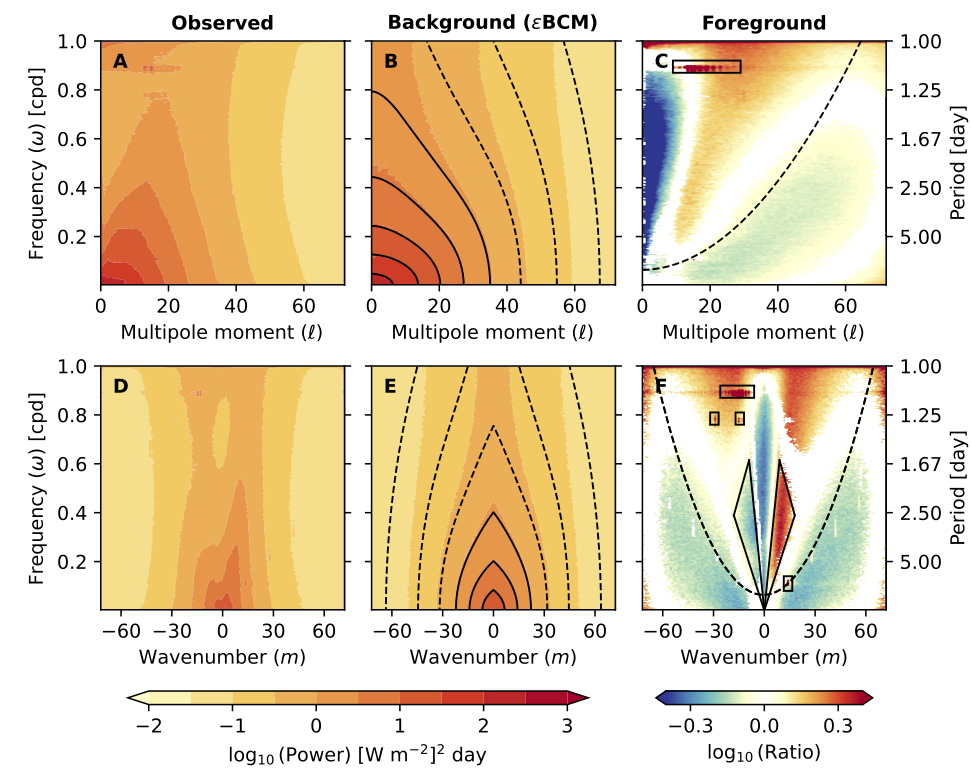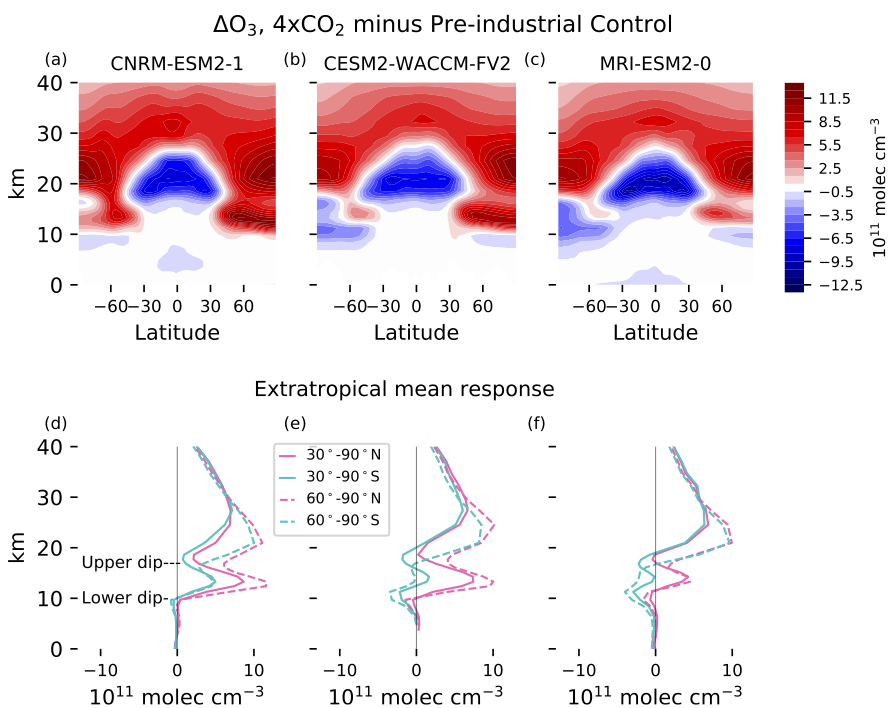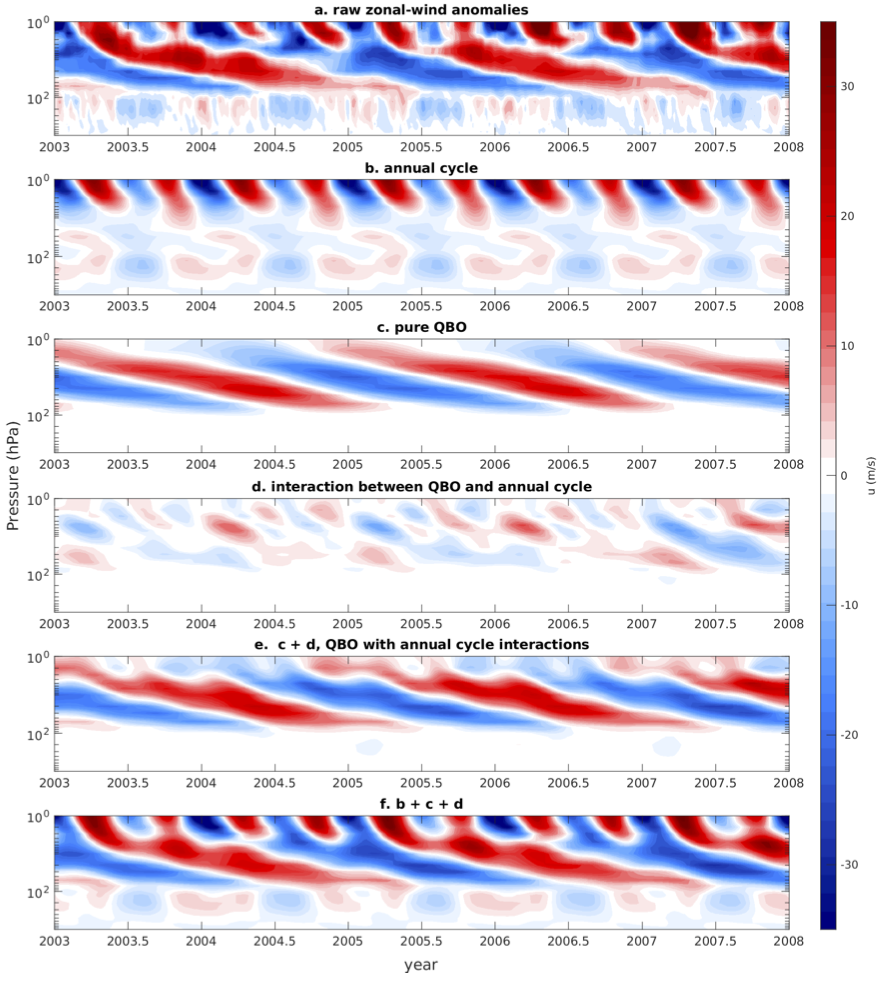On the stability of the stratospheric ozone layer
Published:
Aaron Match submitted a paper on how photochemistry can compensate or amplify perturbations to the ozone layer to journal of Atmospheric Chemistry and Physics, published by the EGU. It has been observed that photochemistry can partially compensate for ozone loss due to CFCs and other ozone depleting substances. The process is known as self healing: decreases in tropical ozone aloft are associated with a counterintuitive increase at lower levels. It is not enough to fully compensate for the loss, but mitigates it. More recently, greenhouse gases have begun to cool the stratosphere, leading to increasing ozone aloft, which is partially compensated for by ozone reduction below (referred to as “reverse self healing”, which is admittedly a rather contorted phrase!). These responses are attributed to the fact that ozone loss increases the penetration of high energy UV radiation, which leads to more ozone production below (and skin cancer for us on the surface), vice versa for ozone increase due to cooling. Aaron asked whether this compensating response is generic, and found it is not! In upper stratosphere, photochemistry can amplify a perturbation, such that ozone loss would lead to more loss. But fortunate for us on the surface, compensation in the lower stratosphere is actually much more significant than appreciated before!

Self healing and reverse self healing have never been quantitatively investigated. Aaron developed an approach to quantify the effect of “photochemical adjustment”, that is, how much changes in the UV flux due to ozone perturbations influences ozone below. Above about 40 km, photochemical adjustment is destablizing, amplifying perturbations, while below 40 km, the adjustment is stabilizing, compensating for perturbations. Fortunately most of the ozone layer is below 40 km, so our atmosphere is largely in a stablizing regime, but this may not have been in the case during the evolution of the atmosphere. On an early Earth with less oxygen, the whole atmosphere may have been in a destabilizing regime.




